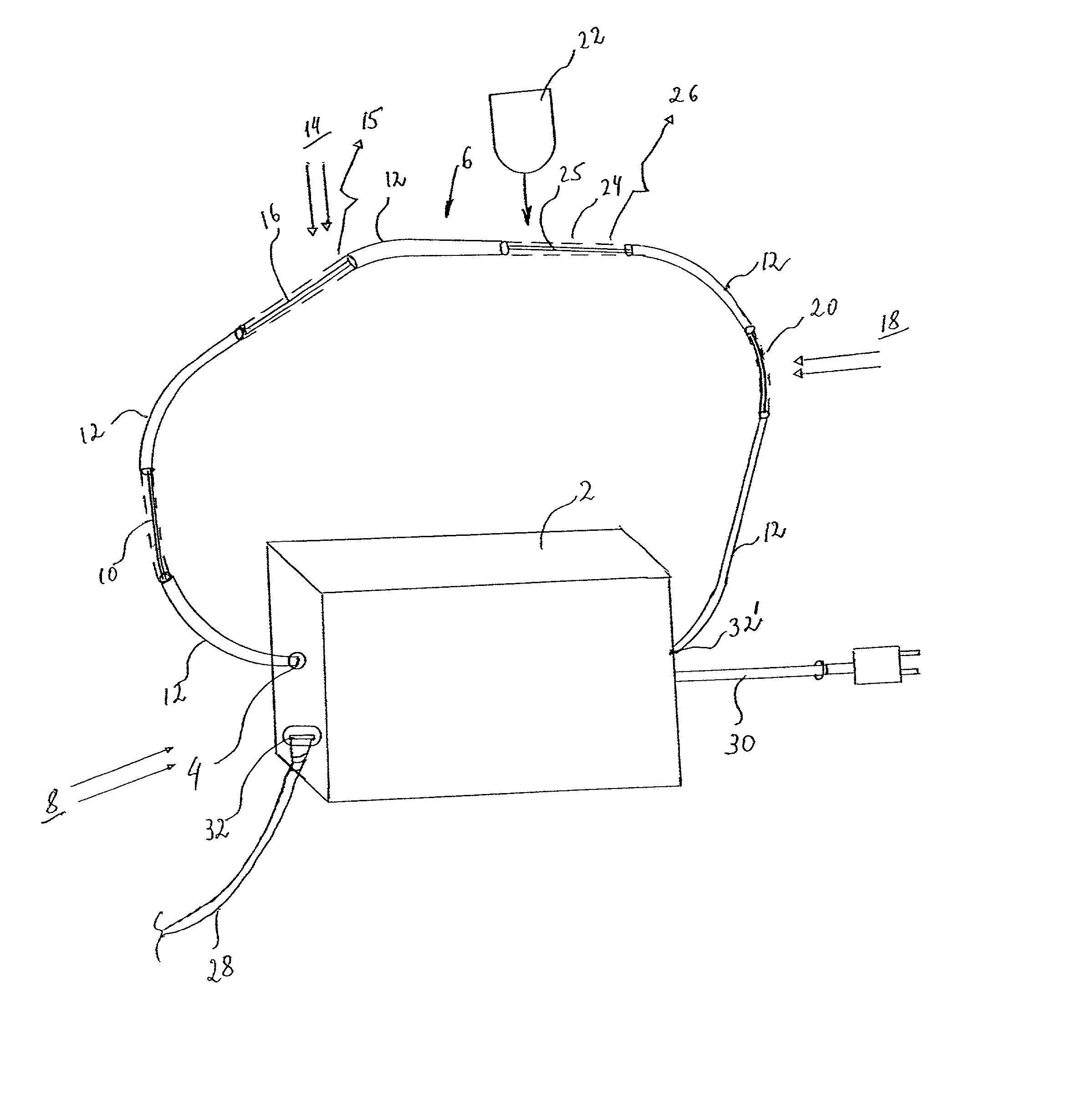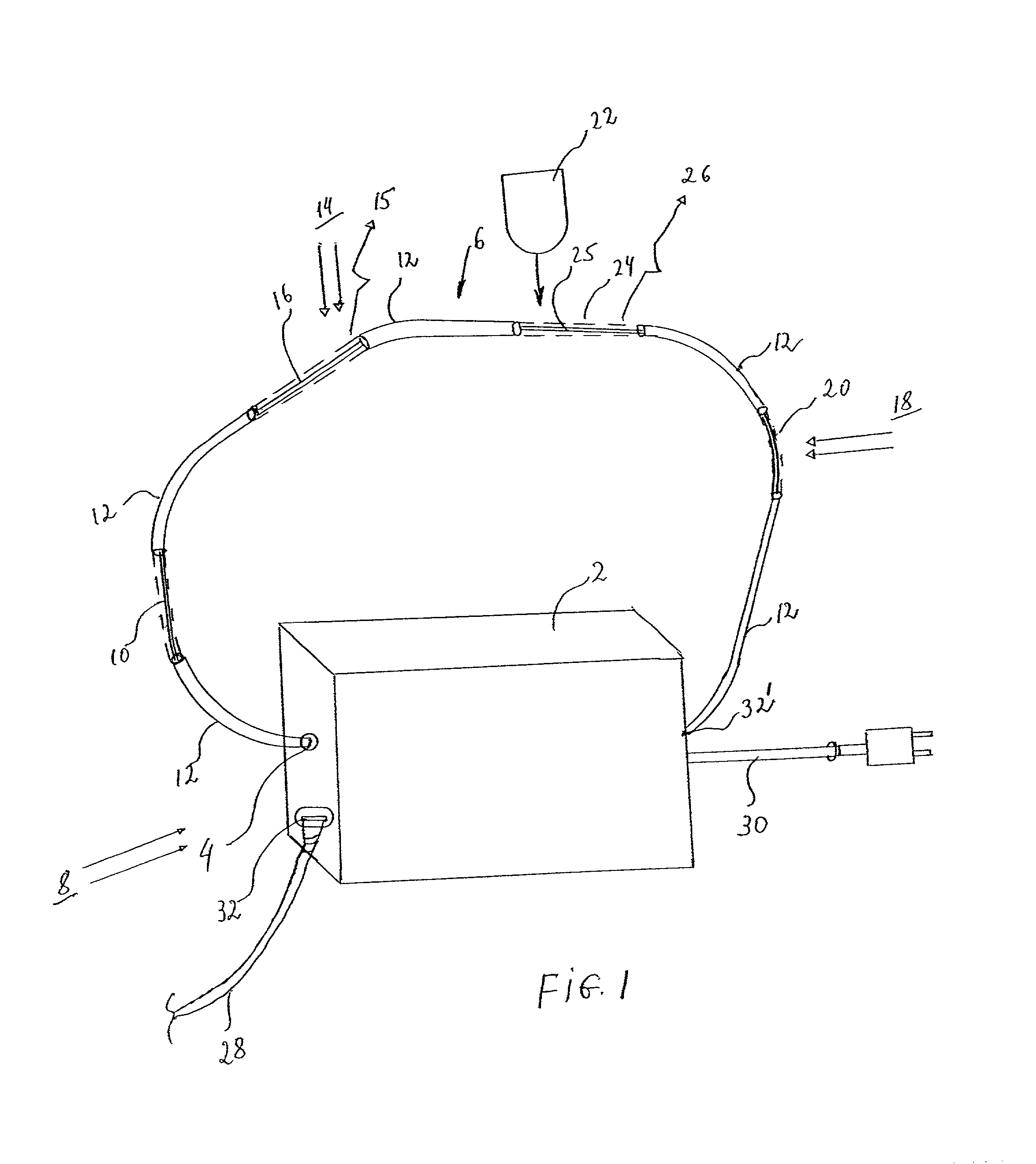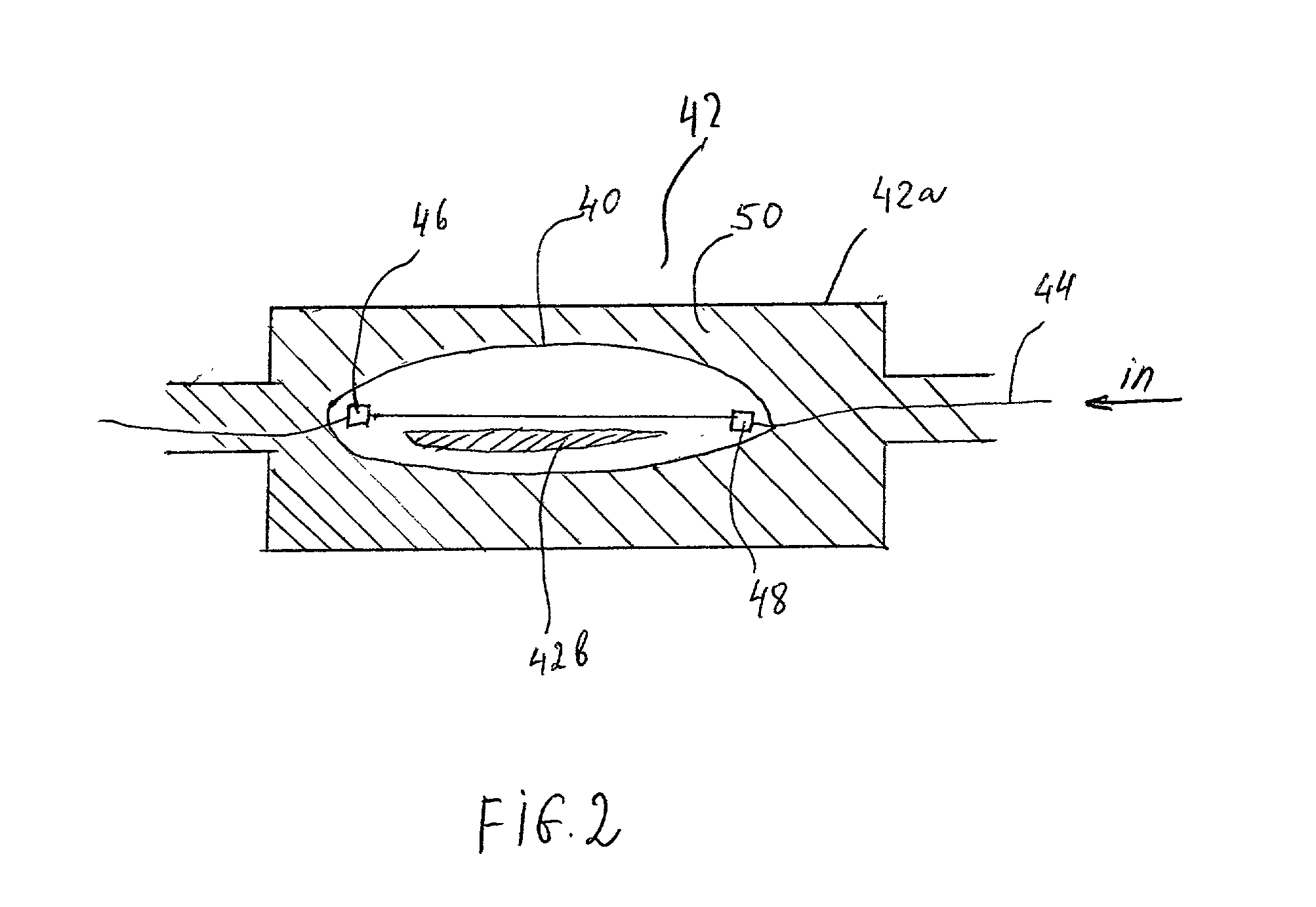Distributed fiberoptic sensors
a fiberoptic sensor and fiber optic technology, applied in the field of sensing devices, can solve the problems of not providing real-time dose information, irregular or incomplete curing of parts, and inability to ensure that each current batch of parts is correctly cured
- Summary
- Abstract
- Description
- Claims
- Application Information
AI Technical Summary
Benefits of technology
Problems solved by technology
Method used
Image
Examples
Embodiment Construction
[0046] FIG. 1 represents a distributed radiation sensor according to the present invention. Optical drive and receive unit 2 is controlled by a computer (not shown) via cable 28, for example, a USB connector, which is plugged into cable connector 32, for example, a USB connector. Of course, any interface to a controlling computer may be used, and the unit may be composed of separate subsections which perform the same function. Power for unit 2 is provided by power cable 30. Optical fiber connector 4 connects to an optical fiber, which in this case is sensing fiber 6. Native portions 12 of optical fiber 6 are unmodified, and may, for example, be commercially available silica fiber which transmits light directed therethrough with minimal losses. Native portions 12 have at least one layer of cladding, and may have either a single-mode or multi-mode fiber core.
[0047] First radiation sensing region 10 may be defined as a "core dosimeter" region. Sensing region 10 may be modified as part ...
PUM
 Login to View More
Login to View More Abstract
Description
Claims
Application Information
 Login to View More
Login to View More - R&D
- Intellectual Property
- Life Sciences
- Materials
- Tech Scout
- Unparalleled Data Quality
- Higher Quality Content
- 60% Fewer Hallucinations
Browse by: Latest US Patents, China's latest patents, Technical Efficacy Thesaurus, Application Domain, Technology Topic, Popular Technical Reports.
© 2025 PatSnap. All rights reserved.Legal|Privacy policy|Modern Slavery Act Transparency Statement|Sitemap|About US| Contact US: help@patsnap.com



